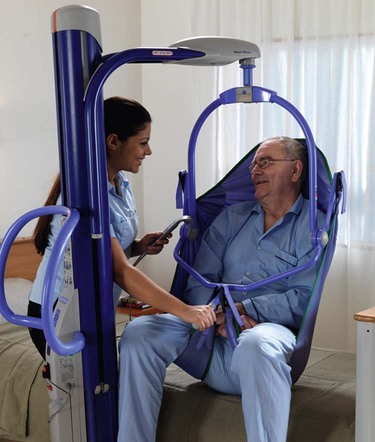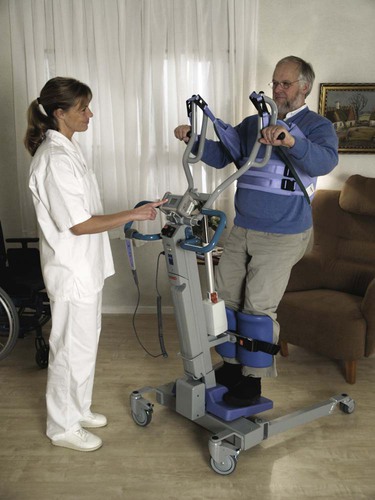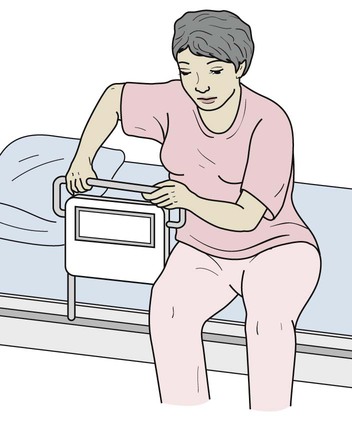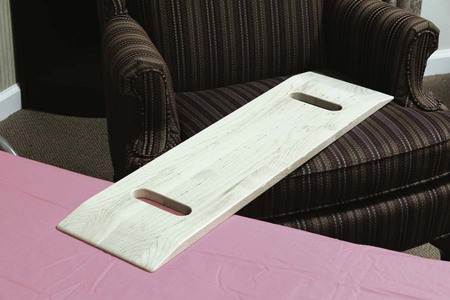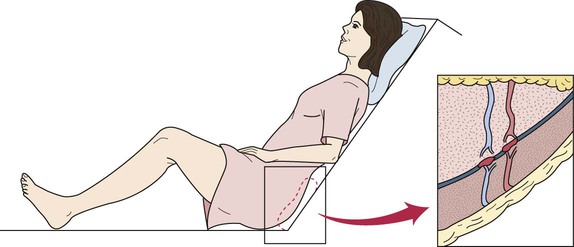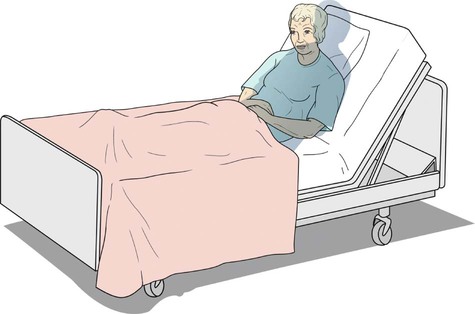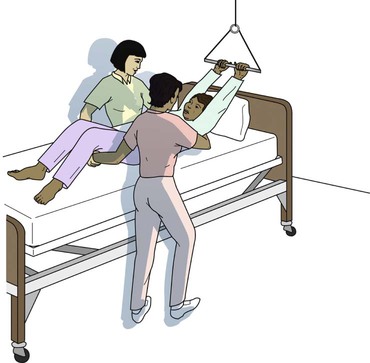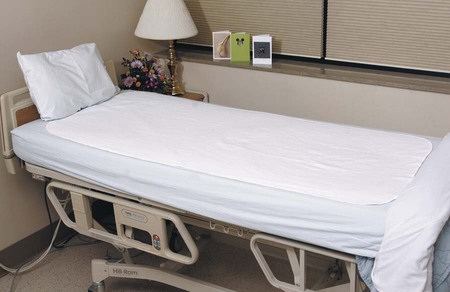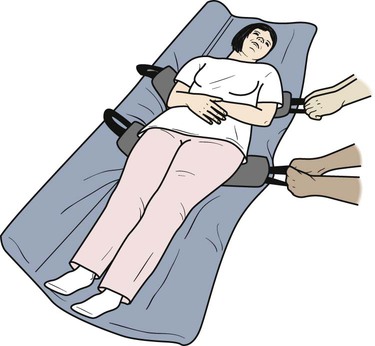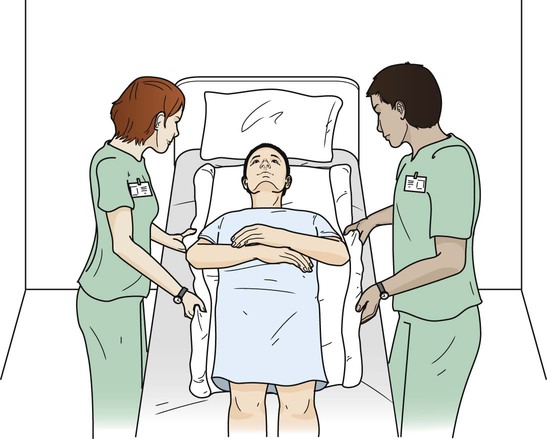• Define the key terms and key abbreviations listed in this chapter. • Identify comfort and safety measures for moving and transferring the person. • Explain how to prevent work-related injuries when moving and transferring persons. • Describe 5 levels of dependence. • Identify the delegation information needed before moving and transferring the person. • Perform the procedures described in this chapter. • Explain how to promote PRIDE in the person, the family, and yourself. See Focus on Communication: Assisting With Moving and Transfers. See Promoting Safety and Comfort: Assisting With Moving and Transfers, p. 170. You must prevent work-related injuries during moving and transfer procedures. Follow the rules in Box 14-1. The Occupational Safety and Health Administration (OSHA) recommends: To safely move and transfer the person, the nurse and health team determine: • The person’s dependence level. See Box 14-2, p. 172. • The amount of help needed and the number of staff needed. See Focus on Older Persons: Preventing Work-Related Injuries, p. 173. See Delegation Guidelines: Preventing Work-Related Injuries, p. 173. See Promoting Safety and Comfort: Preventing Work-Related Injuries, p. 173. Protect the person’s skin during moving and transfer procedures. Friction and shearing injure the skin. Both cause infection and pressure ulcers (Chapter 25). • Friction is the rubbing of 1 surface against another. When moved in bed, the person’s skin rubs against the sheet. • Shearing is when the skin sticks to a surface while muscles slide in the direction the body is moving (Fig. 14-5). It occurs when the person slides down in bed or is moved in bed. To reduce friction and shearing when moving the person in bed: • Use friction-reducing devices. Such devices include a lift sheet (turning sheet). A cotton drawsheet (Chapter 15) serves as a lift sheet (turning sheet). Turning pads, large waterproof pads (Chapter 15), and slide sheets (p. 176) are other friction-reducing devices. See Focus on Older Persons: Protecting the Skin, p. 174. See Focus on Surveys: Protecting the Skin, p. 174. • Level 4: Total Dependence—a mechanical lift or friction-reducing device and at least 2 staff members • Level 3: Extensive Assistance—a mechanical lift or friction-reducing device and at least 2 staff members • The person weighs less than 200 pounds—2 to 3 staff members and a friction-reducing device • The person weighs more than 200 pounds—at least 3 staff members and a friction-reducing device See Delegation Guidelines: Moving Persons in Bed. When the head of the bed is raised, it is easy to slide down toward the middle and foot of the bed (Fig. 14-6). You move the person up in bed for good alignment and comfort. You can sometimes move light-weight adults up in bed alone if they assist using a trapeze. However, it is best done with help and an assist device (p. 176). For heavy, weak, and older persons, 2 or more staff members are needed. Always protect the person and yourself from injury. See Promoting Safety and Comfort: Moving the Person Up in Bed. See procedure: Moving the Person Up in Bed. You use assist devices to move some persons up in bed. Such assist devices include a drawsheet (lift sheet), flat sheet folded in half, turning pad (Fig. 14-8), slide sheet (Fig. 14-9), and large waterproof pad. With these devices, the person is moved more evenly. And shearing and friction are reduced. • Following the guidelines for “Moving Persons in Bed,” p. 174 • For persons recovering from spinal cord surgery or spinal cord injuries See Promoting Safety and Comfort: Moving the Person Up in Bed With an Assist Device. See procedure: Moving the Person Up in Bed With an Assist Device. In one method, the person is moved in segments (Fig. 14-11). Sometimes you can do this alone. With at least 1 co-worker, use a mechanical lift (p. 191) or an assist device: • Following the guidelines for “Moving Persons in Bed,” p. 174 • For persons recovering from spinal cord injures or surgeries See Promoting Safety and Comfort: Moving the Person to the Side of the Bed. See procedure: Moving the Person to the Side of the Bed.
Assisting With Moving and Transfers
Preventing Work-Related Injuries
Protecting the Skin
Moving Persons in Bed
![]() Moving the Person Up in Bed
Moving the Person Up in Bed
![]() Moving the Person Up in Bed With an Assist Device
Moving the Person Up in Bed With an Assist Device
![]() Moving the Person to the Side of the Bed
Moving the Person to the Side of the Bed
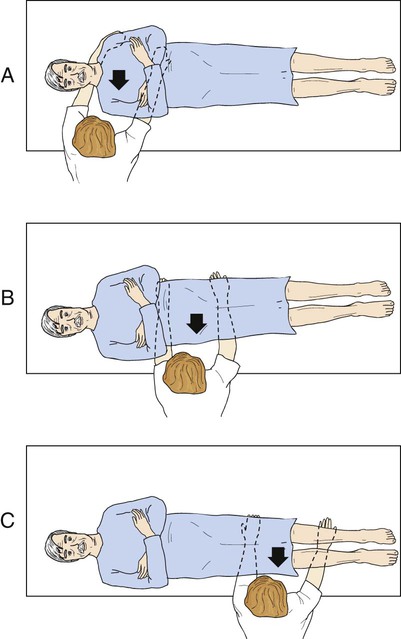
A, The upper part of the body is moved. B, The lower part of the body is moved. C, The legs and feet are moved.

Assisting With Moving and Transfers
Get Clinical Tree app for offline access
